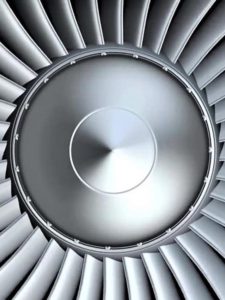RFI/EMI (radio frequency interference/electromagnetic interference) shielding for Aerospace and Defence applications
The defence and aerospace industry have always been the main drivers for RFI/EMI shielding products, those drivers being security in particular the susceptibility of some computer and telecommunications devices to emit electromagnetic radiation (EMR) in a manner that can be used to reconstruct intelligible data. This was known as the TEMPEST program which later became the acronym “Telecommunications Electronics Material Protected from Emanating Spurious Transmissions”.
Battlefield drivers are NEMP or nuclear electromagnetic pulse which is a burst of electromagnetic radiation created by nuclear explosions. The resulting rapidly changing electric and magnetic fields may couple with electrical and electronic systems to produce damaging current and voltage surges which would cause electronic equipment to fail. Physical drivers are harsh temperature environments from -40c to + 200c, resistance to fuels, chemicals and agents such as NBC (nuclear, biological and chemical) wash down. Galvanic corrosion issues caused by salt fog in marine environments.
EMC is the acronym for electromagnetic compatibility which means the ability of equipment to function satisfactorily in its electromagnetic environment without introducing intolerable electromagnetic disturbances to other equipment in that environment. Electronics engineers are very familiar with this and will consider in their design good board layout, filtering, grounding, signal integrity etc. to try resolving EMI at its source. However shielding of the enclosure is just as important and solves the problem of radiated emissions and susceptibility. Mating surfaces on an enclosure can look very flat and you think there is full metal to metal contact but in reality in a mass production process nothing can be that flat and gaps will exist. These gaps are slots and can become radiating antennas. This joint unevenness can be addressed by using more fixings to get good contact between the mating surfaces and at lower frequencies this can work. Example at 100MHz to achieve 20db shielding, gaps of 150mm are acceptable, this reduces to 15mm at 40db – the fixings are getting more and more, at 1GHz it’s impossible, as to achieve 40db the gap is now 1.5mm. These seams need to be filled with a conductive gasket, this will take up all the joint unevenness and depending on the type of gasket will also provide an environmental seal against dust and moisture.
Shielding is a mechanical fix for an electrical problem and the enclosure design engineer should be aware of the types of gaskets available and their different attributes and ensure there is enough land area on the enclosure seams, doors etc. to fit the gasket. In the quest to reduce size and weight of electronic equipment there is a lot a pressure to reduce these land areas which makes this more important than ever.
Electrically conductive elastomers are most preferred EMI shielding gaskets types in the Aerospace/military communications industry are. The base Elastomer is silicone for normal environments and fluorosilicone for fuel and oil resistance, both offer a wide temperature range of -40 to +160 and up to +200 for some grades. The conductive fillers available are silver plated aluminium, silver plated copper, pure nickel and nickel coated graphite. Kemtron’s process capability is extrusion, moulding and conductive vulcanised jointing. Many extrusion profiles are available including cords, tubes, hollow D, solid D, etc, custom profiles are available. Extrusions are supplied in continuous lengths, cut to length or made into large or small diameter O rings which are produced by joining extruded profiles with the same conductive compound as the base material, the join is heat vulcanised ensuring a strong conductive joint. Mouldings include sheet stock, O rings, custom shapes and gaskets. Sheets can be die cut to customers design and a conductive PSA can be applied to aid assembly.
Knitted wire mesh is the original gasket for RFI/EMI shielding and tends to be preferred in the military vehicle/communication cabin market. In applications where low frequencies in the magnetic field such as HEMP knitted mesh gaskets make it the best performer. At 10 kHz, H field (magnetic field) it is possible to achieve a shielding effectiveness of 62 dB, at higher frequencies such as 10Ghz, attenuation’s of above 45 dB can be achieved.
Knitted mesh is very versatile as it can be knitted to any diameter from 1mm up to 25 mm as a solid mesh or over any type of sponge rubber cord or tube therefore fine-tuning its compressibility from hard to very soft. Rectangular sections are available and sponge or solid rubber with a self adhesive backing can be bonded along the length of the mesh to form an environmental seal and or act as an assembly aid.
Custom gaskets can be made from knitted mesh by fabrication or bonding the mesh to the edge of die cut rubber shapes, compression stops can be bonded into the rubber carrier to protect the gasket from over compression.
Standard wire types available are Monel, TCS, Aluminium and Stainless Steel giving the option matching wire types with enclosure materials to give galvanic compatibility.
